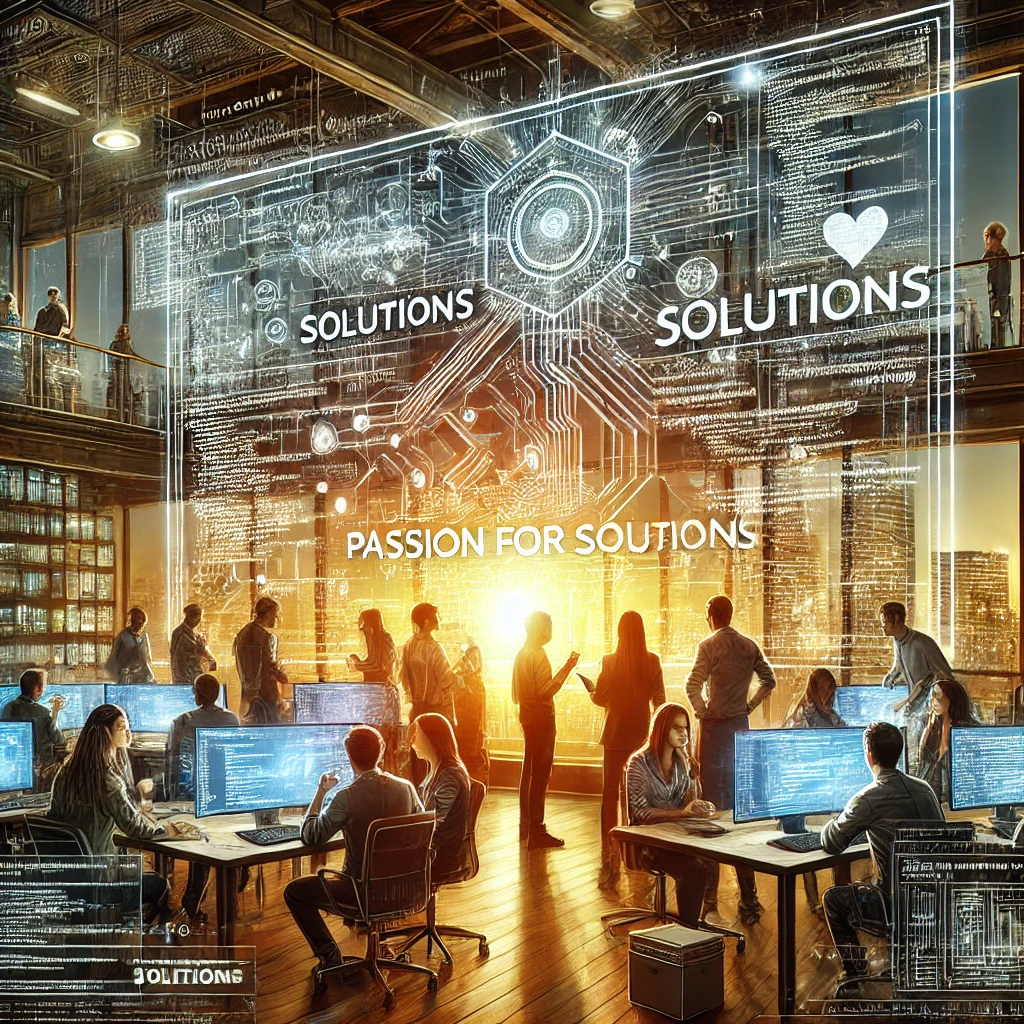
Client’s vision brought to digital life.
By, Mike van Eckendonk
- 14 Aug, 2024
- 315 Views
- 0 Comment
Your Vision, Our Expertise: Crafting Your Digital Product from Concept to Reality
Introduction:
Dreaming of creating an app or software that could change the digital landscape? At XOOMMIT, we understand that the path from idea to a fully functional product can be overwhelming. Whether you’re a startup founder or an established business looking to innovate, we’re here to guide you through the entire Application and Software Development process. This guide will take you on a journey from the initial spark of an idea to the excitement of a successful market launch, ensuring your vision is not only realized but also meets and exceeds market expectations.
Let’s explore how we can turn your dream into a digital reality.
Understanding Your Vision
Defining Your Digital Product:
At XOOMMIT, we start by deeply understanding your product vision. Here’s how we define your digital product:
– Identify the Problem: We work with you to pinpoint the specific problem or need your product will address. For instance, Zoom identified the need for reliable video conferencing, which became vital during the shift to remote work.
– Types of Digital Products:
- Mobile Apps: We develop applications for smartphones or tablets, ensuring they’re available on iOS and Android platforms.
- Web Apps: We create browser-based applications that are accessible from any device, like Google Docs or Trell.
- Software: From desktop applications to server-based solutions, we design and develop software to meet your business needs.
– Conceptualization: Our team engages in brainstorming sessions, utilizing techniques like mind mapping or SWOT analysis to refine your idea, ensuring it aligns with market demands and technological feasibility.
https://xmind.app/mindmap/automation-flow/Jgij9M/?from=gallery
Alt text: Infographic on brainstorming techniques for defining a digital product.
Identifying Your Target Audience:
Understanding your audience is key to our approach:
- Market Research: We conduct thorough research using surveys, focus groups, or analytics tools to gather insights on your potential users. For example, Spotify identified a gap in personalized music streaming.
- Create User Personas: We’ll develop detailed profiles of your ideal users. If you’re building a fitness app, we might profile “Fitness Enthusiast Emily” or “Busy Professional Bob.”
- Competitive Analysis: We analyze competitors to find gaps or areas for improvement. We look at how apps like Headspace or Calm have tailored their offerings.
- Align with User Goals: We ensure your product aligns with what your users expect, whether it’s entertainment, productivity, or problem-solving.
Setting Clear Objectives:
Before diving into development, we set clear objectives:
- Business Goals: What are your business objectives? Are you aiming for market dominance, user engagement, or revenue? We’ll help define these goals.
- User Goals: We’ll understand how your app or software will enhance users’ lives, whether it’s saving time, reducing costs, or improving their routine.
- Metrics for Success: We establish KPIs like:
– User Retention Rate: How many users return after their first visit?
– App Store Ranking: How does your app fare in the app stores?
– Revenue: If your product is monetized, how much revenue do you expect?
Our Development Process
Ideation and Conceptualization:
Our journey begins with your idea:
- Brainstorming Sessions: We gather a diverse team to brainstorm, fostering creativity through techniques like design thinking.
- Market Validation: We test your idea through an MVP or prototype to gauge user acceptance and refine your product.
- Feasibility Study: We assess the technical, financial, and market feasibility of your idea, identifying potential roadblocks early.
Design Phase – UI/UX Design:
Your product starts taking shape here:
- User Interface (UI) Design: We focus on aesthetics and usability, incorporating trends like:
– Dark Mode: A popular choice for reducing eye strain.
– Minimalist Design: Simple, clean interfaces for a modern look. - User Experience (UX) Design:
– User Flows: We design the user journey to ensure a smooth experience.
– Prototyping: Using tools like Figma or Sketch, we create interactive prototypes for testing.
Alt text: Example of a UI/UX design mockup for an app.
Technical Feasibility and Planning:
We dive into the technical aspects:
- Technology Stack Selection: We choose the right tech stack for your product. For web applications, we might suggest the MERN stack; for mobile, React Native or Flutter.
- Project Planning: We adopt agile methodologies like Scrum for flexibility and continuous improvement.
- Risk Assessment: We identify and plan for potential risks, ensuring a smooth development path.
Development and Coding:
This is where your vision comes to life:
- Coding Standards: Our developers adhere to best practices like SOLID principles for maintainable and scalable code.
- Version Control: We use tools like Git to manage changes and facilitate collaboration.
- API Integration: We discuss the importance of APIs for interoperability and scalability, allowing your product to connect with other systems or services.
Testing and Quality Assurance:
We ensure your product is of the highest quality:
- Types of Testing:
– Unit Testing: Testing individual components for functionality.
– Integration Testing: Ensuring different parts of your application work together.
–User Acceptance Testing (UAT): Real users test your product to validate it meets their expectations. - Continuous Integration/Continuous Deployment (CI/CD): We automate testing and deployment processes to minimize errors and accelerate development.
Tools and Technologies We Use
Must-have Tools for Development
Here are some tools we leverage:
- IDEs: We use Visual Studio Code for versatile coding, Android Studio for Android app development, or Xcode for iOS.
- Design Tools: [Figma](#) for collaborative design, [Adobe XD](#), or Sketch for UI/UX.
- Project Management: Tools like [Trello](#), [Jira](#), or [Asana](#) to keep your project on track.
Alt text: Project management tool interface.
Choosing the Right Technology Stack:
Selecting the right tech stack is crucial:
- Considerations:
– Scalability: Can your tech stack grow with your product?
– Developer Expertise: What skills does our team possess?
– Cost: We consider licensing fees, hosting costs, and future maintenance. - Examples:
– Web: MERN stack for a full-stack JavaScript solution.
– Mobile: React Native or Flutter for cross-platform development.
Integration with Existing Systems
We ensure your product can work with other systems:
- APIs: We use RESTful APIs or GraphQL for data exchange and interoperability.
- Cloud Services: Leveraging AWS, Azure, [Google Cloud] or our own(#) for hosting, storage, and scalability.
- Security Considerations: We prioritize API security, data encryption, and compliance with regulations like GDPR.
Marketing Your App*
Pre-Launch Marketing Strategies:
Before we launch:
- Teaser Campaigns: We create buzz with sneak peeks or beta testing, much like Clubhouse did.
- SEO and Content Marketing: We optimize for search engines and position you as an authority in your niche.
- Influencer Marketing: Partnering with influencers to reach your target audience, similar to Headspace.
Launch Day Activities:
We make your launch memorable:
- Press Releases: We announce your launch to media outlets for visibility.
- Social Media Campaigns: Utilizing platforms like Instagram, X, or [LinkedIn](#) for a big launch push.
- App Store Optimization (ASO): We optimize your app store listing for better discoverability.
Post-Launch Marketing and Updates:
We keep your app fresh and engaging:
- User Feedback: We collect and act on user feedback to improve your app.
- Regular Updates: Keeping users engaged with new features and updates.
- Retention Strategies: We use push notifications, in-app messaging, or loyalty programs to retain users.
Case Studies and Success Stories
From Concept to Market Leader:
Consider Zoom:
- Zoom evolved from a simple video conferencing tool to a market leader amidst the work-from-home trend.
– Key Takeaways:
– Focus on user experience by ensuring reliable, high-quality video calls.
– Scalability to handle millions of users simultaneously.
– Adapting to market needs with features like virtual backgrounds or breakout rooms.
Learning from Failures:
Reflect on Houseparty:
- Houseparty was once popular but struggled to maintain relevance:
– Key Lessons:
– The need for continuous innovation to keep users engaged.
– Market adaptability, as the app failed to keep pace with social media trends.
Conclusion
Developing an app or software is a journey filled with challenges and opportunities. At XOOMMIT, we’re here to guide you from understanding your vision to post-launch marketing, ensuring your digital creation not only enters the market but thrives in it.
Now that you have a comprehensive guide:
– Download Our Free App Development Checklist: Ensure you’ve covered all the bases.
– Contact Us: Let’s discuss how we can bring your vision to life.
With our expertise, your digital product can not only meet but exceed market expectations. Start your development journey with us today!
* marketing and social media: optional
Recent Comments
Category
- Android (1)
- Cloud Solutions (1)
- Cyber Security (2)
- Marketing (1)
- Software (6)
- VPS (1)
- Web development (4)


